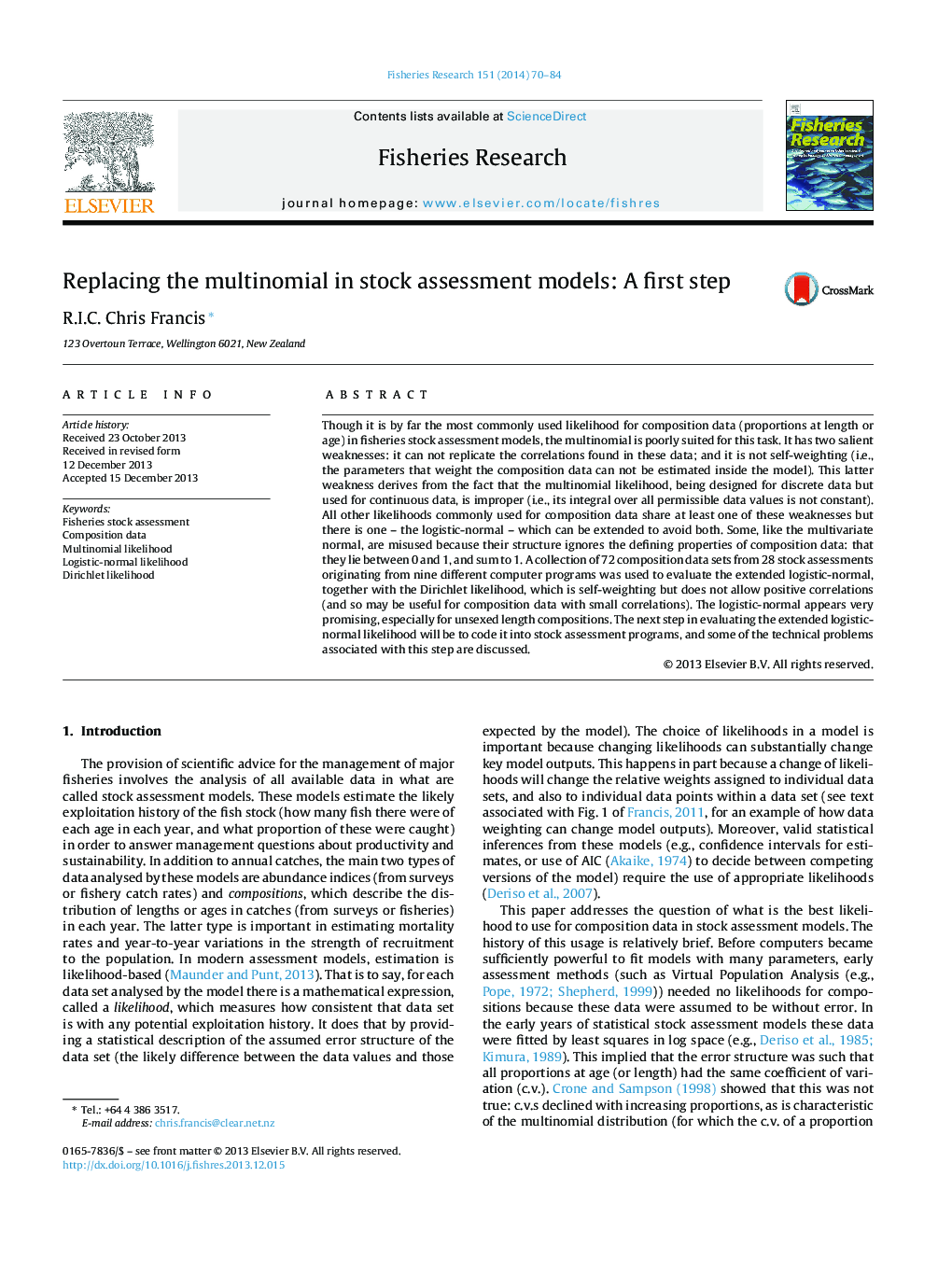| Article ID | Journal | Published Year | Pages | File Type |
|---|---|---|---|---|
| 6385944 | Fisheries Research | 2014 | 15 Pages |
Abstract
Though it is by far the most commonly used likelihood for composition data (proportions at length or age) in fisheries stock assessment models, the multinomial is poorly suited for this task. It has two salient weaknesses: it can not replicate the correlations found in these data; and it is not self-weighting (i.e., the parameters that weight the composition data can not be estimated inside the model). This latter weakness derives from the fact that the multinomial likelihood, being designed for discrete data but used for continuous data, is improper (i.e., its integral over all permissible data values is not constant). All other likelihoods commonly used for composition data share at least one of these weaknesses but there is one - the logistic-normal - which can be extended to avoid both. Some, like the multivariate normal, are misused because their structure ignores the defining properties of composition data: that they lie between 0 and 1, and sum to 1. A collection of 72 composition data sets from 28 stock assessments originating from nine different computer programs was used to evaluate the extended logistic-normal, together with the Dirichlet likelihood, which is self-weighting but does not allow positive correlations (and so may be useful for composition data with small correlations). The logistic-normal appears very promising, especially for unsexed length compositions. The next step in evaluating the extended logistic-normal likelihood will be to code it into stock assessment programs, and some of the technical problems associated with this step are discussed.
Keywords
Related Topics
Life Sciences
Agricultural and Biological Sciences
Aquatic Science
Authors
R.I.C. Chris Francis,
